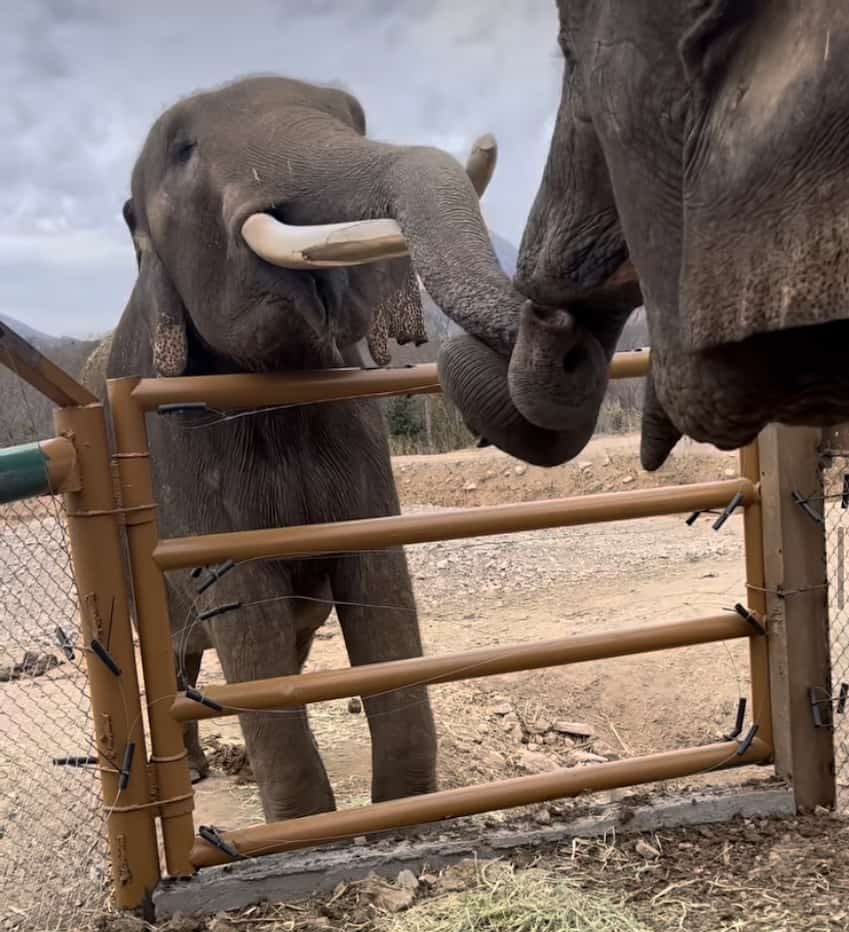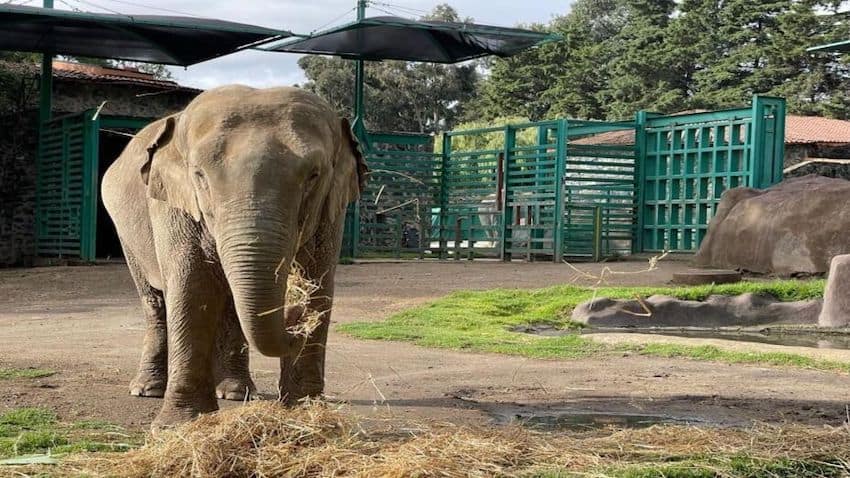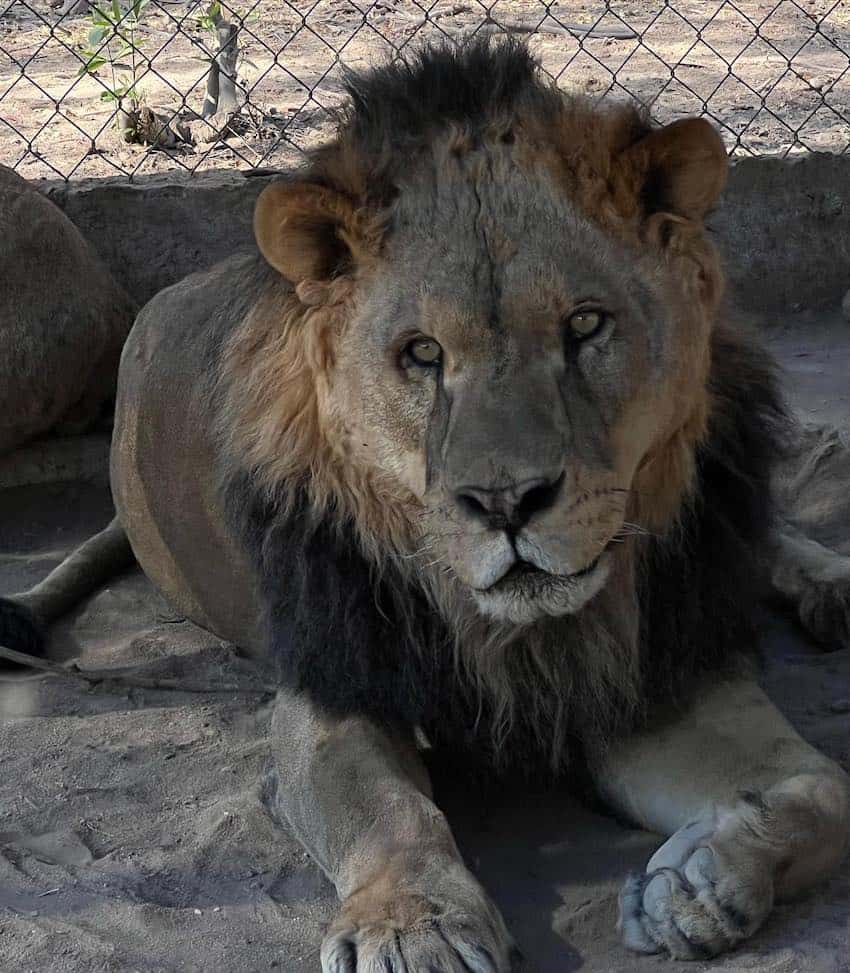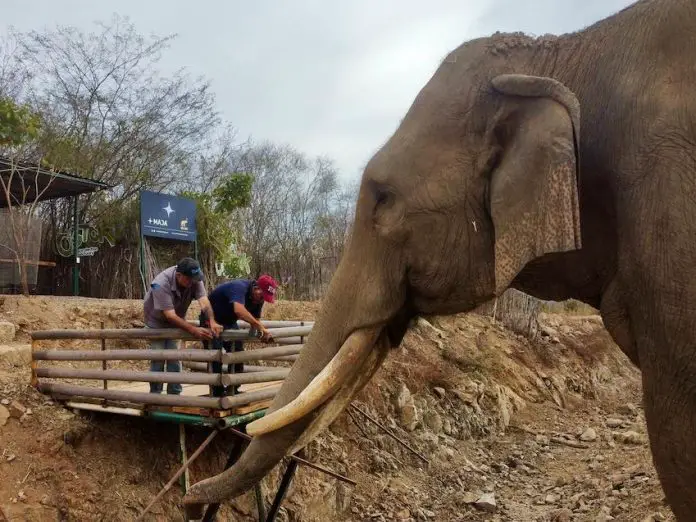Two rescue elephants living at an animal sanctuary in Culiacán, Sinaloa have potentially developed an amorous relationship, having been seen touching trunks right before Valentine’s Day.
“Love is in the air” proclaimed the online news source Línea Directa. Both elephants were rescued after reportedly receiving years of abuse in the circus.

Big Boy, a 39-year-old male African elephant, arrived at the Ostok Animal Protection & Sanctuary in 2021 and had been there a year when Bireki, a beguiling 31-year-old of the same species, showed up in June 2022.
“This is a great advance,” Ernesto Zazueta, director of the Ostok sanctuary, said of the “cuddling” pachyderms. “They have come to understand each other more and more, and [now] are very close to being together.” Although Bireki “had been somewhat distant” for a few months, when she and Big Boy were caught in a “very affectionate intertwining of their trunks” last month, it indicated “Cupid had worked his magic” and that Big Boy was indeed her pachyderm sweetheart — even though the two “roommates” were separated by a metal fence.
Bireki arrived at Ostok, a 10-hectare (25-acre) sanctuary north of Culiacán after being rescued from a circus in Mexico and then spending years at a zoo in Toluca.
Big Boy became something of a celebrity at the zoo due to his status as a supposed abuse survivor — although the circus that owned him before he ended up at the Culiacán zoo has disputed in the media claims of his abuse. After he was transferred during the COVID pandemic and he became the Ostok’s first elephant, his celebrity grew further, with The Mazatlan Weekly writing earlier this year that the sanctuary is “known for being the home of Big Boy.”

When Bireki, already known herself for being the first Asian elephant to be born on Mexican soil, was set to arrive 14 months later, the same newspaper trumpeted “The wait is over! The girlfriend of the elephant Big Boy is about to arrive in Culiacán.”
Before arriving at Ostok, where some 400 animals reside, Bireki had spent several years in rehabilitation in México state at the Zoológico de Zacango in Toluca.
The lineup at Ostok includes birds of prey, parrots, deer, lions, jaguars and pumas — and potentially a hippopotamus or two (or maybe even more) if Colombia completes its plan to decrease its invasive hippo population problem by shipping 10 of the animals to Mexico.
As for the elefantes enamorados (elephants in love), their “romantic meet-and-greet,” as described by the online news source Ananova, was nothing to sneeze at. Experts at the sanctuary point out that elephants often use their trunks to greet each other.

In some cultures, the uniting of elephant trunks is considered good luck, signifying closeness and camaraderie.
Regardless, the animal keepers at Ostok simply are touched that Big Boy and Bireki have been able to find peace, let alone possible romance, after years of alleged abuse.
With reports from Línea Directa and Ananova
